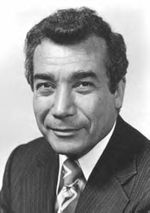By DAVID GONZALEZ
New York Times (August 6, 2009)
In the summer of 1959, Edwin Torres landed a $60-a-week job and wound up on the front page of El Diario. He had just been hired as the first Puerto Rican assistant district attorney in New York – and probably, he thinks, the entire United States.
He still recalls the headline: “Exemplary Son of El Barrio Becomes Prosecutor.”
“You would’ve thought I had been named attorney general,” he said. “That’s how big it was.”
Half a century later, the long and sometimes bittersweet history of Puerto Ricans in New York is expected to add a celebratory chapter today as the Senate confirms Judge Sonia Sotomayor’s nomination to the Supreme Court. Her personal journey – from a single-parent home in the South Bronx projects to the Ivy League and an impressive legal career – has provoked a fierce pride in many other Puerto Ricans who glimpse reflections of their own struggles.
“This is about the acceptance that eluded us,” said Mr. Torres, 78, who himself earned distinction as a jurist, novelist and raconteur. “It is beyond anybody’s imagination when I started that a Puerto Rican could ascend to that position, to the Supreme Court.”
Arguably the highest rung that any Puerto Rican has yet reached in this country, the nomination of Judge Sotomayor is a watershed event for Puerto Rican New York. It builds on the achievements that others of her generation have made in business, politics, the arts and pop culture. It extends the legacy of an earlier, lesser-known generation who created social service and educational institutions that persist today, helping newcomers from Mexico and the Dominican Republic.
Yet the city has also been a place of heartbreak. Though Puerto Ricans were granted citizenship in 1917 and large numbers of them arrived in New York in the 1950s, poverty and lack of opportunity still pockmark some of their neighborhoods. A 2004 report by a Hispanic advocacy group showed that compared with other Latino groups nationwide, Puerto Ricans had the highest poverty rate, the lowest average family income and the highest unemployment rate for men.
In politics, the trailblazer Herman Badillo saw his career go from a series of heady firsts in the 1960s to frustration in the 1980s when his dreams of becoming the city’s first Puerto Rican mayor were foiled by Harlem’s political bosses. Just four years ago, Fernando Ferrer was trounced in his bid against Mayor Michael R. Bloomberg.
All those setbacks lose their sting, if only for a moment, in the glow of Judge Sotomayor’s achievement, which many of her fellow Puerto Ricans say is as monumental for them as President Obama’s victory was for African-Americans. It has affirmed a sense of Puerto Rican identity at a moment when that distinction is often obscured by catch-all labels like Latino and Hispanic – and even as it is subjected to negative comparisons.
“Many elite Latin Americans have implied that Puerto Ricans blew it, because we had citizenship and did nothing,” said Lillian Jimenez, a documentary filmmaker who co-produced a series of television ads in support of Judge Sotomayor’s nomination. “But we were the biggest Spanish-speaking group in New York for decades, and bore the brunt of discrimination, especially in the 1950s. We struggled for our rights. We have people everywhere doing all kinds of things. But that history has not been known.”
That history is in danger of disappearing in East Harlem, long the cradle of Puerto Rican New York. After waves of gentrification and development, parts of the area are now being advertised as Upper Yorkville, a new annex to the predominantly white Upper East Side. While the poor have stayed behind, many of East Harlem’s successful sons and daughters have scattered to the suburbs.
“We have a whole intellectual and professional class that is invisible – people who came up though the neighborhood, with a working-class background, who really excelled,” said Angelo Falcon, president of the National Institute for Latino Policy.
“But it’s so dispersed, people don’t see it. They do not make up a real, physical community, but they have the identity.”
For those who paved the way for Judge Sotomayor, embracing that identity was the first step in charting their personal and professional paths out of hardship. Manuel del Valle, 60, an overachiever from the housing projects on Amsterdam Avenue, made the same leaps as the judge – to Princeton University and Yale Law School – but preceded her by five years.
Taking a cue from the black students at Princeton, he and the handful of working-class Puerto Ricans from New York pressured university officials to offer a course on Puerto Rican history and to admit more minority students. They saw their goal as creating a class of lawyers, doctors, writers and activists who would use their expertise to lift up their old neighborhoods.
“Talk about arrogance,” said Mr. del Valle, who now teaches law in Puerto Rico. “We actually believed we would have a dynamic impact on all the institutions American society had to offer.”
Judge Sotomayor’s nomination, he said, is a vindication of those efforts.
“We were invisible,” he said. “She made us visible.”
In New York, many have welcomed the judge’s visibility during a summer when the most celebrated – and reviled – local politicians were two Puerto Rican state senators who brought the state government to a standstill by mounting an abortive coup against their fellow Democrats.
“She really came at a moment when there is a public reassessment of the value of identity politics through this brouhaha in the Senate,” said Ms. Davila, a professor of anthropology at New York University who has written extensively on Puerto Rican and Latino identity. “Here came this woman who reinvigorated us with the idea that a Latina can have a lot to contribute, not just to their own group, but to the entire American society.”
But it is among her own – in the South Bronx, East Harlem or the Los Sures neighborhood of Brooklyn – where Judge Sotomayor’s success resonates loudest, for the simple reason that many people understand the level of perseverance she needed to achieve it.
Orlando Plaza, 41, who took time off from his doctoral studies in history about five years ago to open Camaradas, a popular bar in East Harlem, sees her appeal as a sort of ethnic Rorschach test.
“Whether it’s growing up in the Bronx, going to Catholic school or being from a single-parent household, there are so many tropes in her own story that we feel pride that someone from a background like ours achieved something so enormous,” he said. “This is the real Jenny from the block.”
And it is on the block, among the men and women who left Puerto Rico decades ago so their children might one day become professionals, where her story is most sweetly savored. The faces of the men and women playing dominoes or shooting pool at the Betances Senior Center in the Bronx attest to decades of hard work.
Many of them came to New York as teenagers more out of despair than dreams. Lucy Medina, who arrived in the 1950s, worked as a keypunch operator and in other jobs as she singlehandedly raised two children. Today, her son is a captain in the city’s Department of Correction and her daughter is a real estate executive.
Impressive as the judge’s accomplishments are, Ms. Medina is more impressed with the judge’s mother, Celina Sotomayor, who did what she had to do in order to raise two successful children in the projects.
“Her mother and I are very similar,” said Ms. Medina, 77. “I know what she went through. We sacrificed ourselves so our children would get an education and get ahead. A lot of women here have done that. We stayed on top of our children and made sure they didn’t get sidetracked.”

